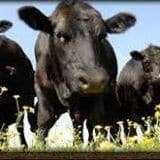“Shootin’ The Bull”
End of Day Market Recap
by Christopher Swift
3/10/2023
Live Cattle:
In my opinion, I found an anomaly this week that spurred a question, leading to a consensus. In June of 2019, there were 11.7 million head of cattle on feed. The June contract moved approximately $20.00 higher from April of ’18 to March of ’19 to reach a high of $124.90. Upon reaching contract high, traders pushed June of ’19 back down to $110.50 by expiration. Today, and for the past 8 months, feed yards have carried 11.5 to 11.7 million head on feed. The June of ’23 contract has rallied from inception of the contract to the high made February 22 almost $20.00. The question I posed was, “why are June fats $50.00 higher today than they were in June of ’19, with the same amount of inventory on hand?” The answers varied from weights, to heifers, to cow slaughter, but the consensus seemed to be that more consumers had money in the past two years that did not have money before. As there is a belief that the 4.5 trillion dollars doled out is the reason, those that could not afford beef before, now could. As they developed a taste for, the demand continued, and box prices were able to remain elevated, offering a wider margin to pay a higher price for fed cattle. My analysis of inflation and recession impacting the consumers discretionary spending habits has been early. Potentially either the amount of money still sloshing around, or the increased debt consumers are taking on, has seemingly kept demand stable for longer. As the week closed, it appeared that steps were being taken to exit equities and buy fixed assets. The Biden administration is back threatening higher taxes and restrictions placed upon subsidy recipients. Investors do not like haircuts on profits and businesses do not like being told how to run their business. Even if they do accept subsidies. Attempting to draw something from all of this, I’ll say that if the cause for the $50.00 increase in price is due to inflationary factors, caused by the excessive printing of money, then recessionary factors, and an agenda of the Fed to stamp out inflation, has the potential to cause prices to decline. This week has been full of talk of high-priced cattle. Only to a cattleman, that is looking to sell cattle, has this much enthusiasm about the higher price. The consumer does not like higher prices of anything. Retail meat sellers want a low, steady price to achieve profits through volume of sales. Packers don’t want a high cattle price because it impacts their margins too, if beef can’t be sold at the higher price. Cattle feeders don’t like the higher feeder cattle prices due to margins squeezing them. So, the higher prices have clearly made for some interesting talk about cattle. Unfortunately, there will be more attempts to circumvent the higher price, whether that be with competing meats, eating less of, or raising the price so high as to ration product to the consumer, still believed going to shift again in discretionary spending habits.
Live cattle futures settled lower on the week, with technical indicators softening. February marketing’s of stockers and feeders, combined with poor weather in the northeast during February, leads me to anticipate the on-feed number remaining between 11.5 and 11.7 for at least another two months. Wheat pasture cattle, although fewer, will be coming at the end of March. It will be more than interesting to see if volume of sales of stockers and feeders increases in March and April as price is a determining factor when paying bills. Feeder cattle futures traders spent the majority of this week diverging basis. This produces a much less likely chance for cattle feeders to hedge incoming inventory in the future and increases basis risk considerably to the backgrounder. This does not have any impact on what futures traders can still do. It simply suggests that regardless of whatever futures traders do, they will have to answer to the cash markets as physically delivered cattle and feeder cattle settlement to the index, will take place. If the cash levels do not equal the levels of futures, the futures then move or settle to the levels of cash. I continue to believe there is significant risk in the feeder market. Actually, it may have doubled, due to as much risk of price decline not covering input costs, as there is not achieving a high enough sale price to replace inventory. The production side of the industry has some significant hurdles to overcome. Under current, and anticipated economic environment changes, I look for the consumer to contract more in discretionary spending habits than expand. All the while, the cow/calf operations are looking at this potential consumer contraction and figure out how they will expand with either having to do with less revenue if holding back heifers or need more capital to buy more cattle, at the second highest price in history.
Energy prices have remained violent this week. By weeks end though, it appears that energy prices are weakening with Diesel fuel having made a new low from the June of ’22 high. The previous analysis of China and India’s demand offsetting the weakness of the US economy is fading quickly. While those countries may continue to grow, the US is on a path to recession. Debt markets were roiled this week with the two year note moving as much as I have ever seen it in a one and two day time frame. All timed instruments were lower at one time during the week, but by Friday, the collapse of Silicon Vally bank seemed to set in motion a chain of events that looks eerily like a recession. As Dennis Gartman would say, “there is always more than one cockroach”. All debt instruments were up sharply on Friday, suggesting a move of assets from risk to safety. Equities continued to move lower as investors lose faith in the Fed and Biden administrations ability to manage the current economic environment. I am in waiting for the next shoe to drop.
Feeder Cattle:
Lean Hogs:
Corn:
Energy:
Bonds:
This is intended to be or is in the nature of a solicitation. An investment in futures contracts is speculative, involves a high degree of risk and is suitable only for persons who can assume the risk of loss in excess of the margin deposits. You should carefully consider whether futures trading is appropriate for you in light of your investment experience, trading objectives, financial resources and other relevant circumstances. PAST PERFORMANCE IS NOT NECESSARILY INDICATIVE OF FUTURE RESULTS.
“Shootin’ The Bull”

